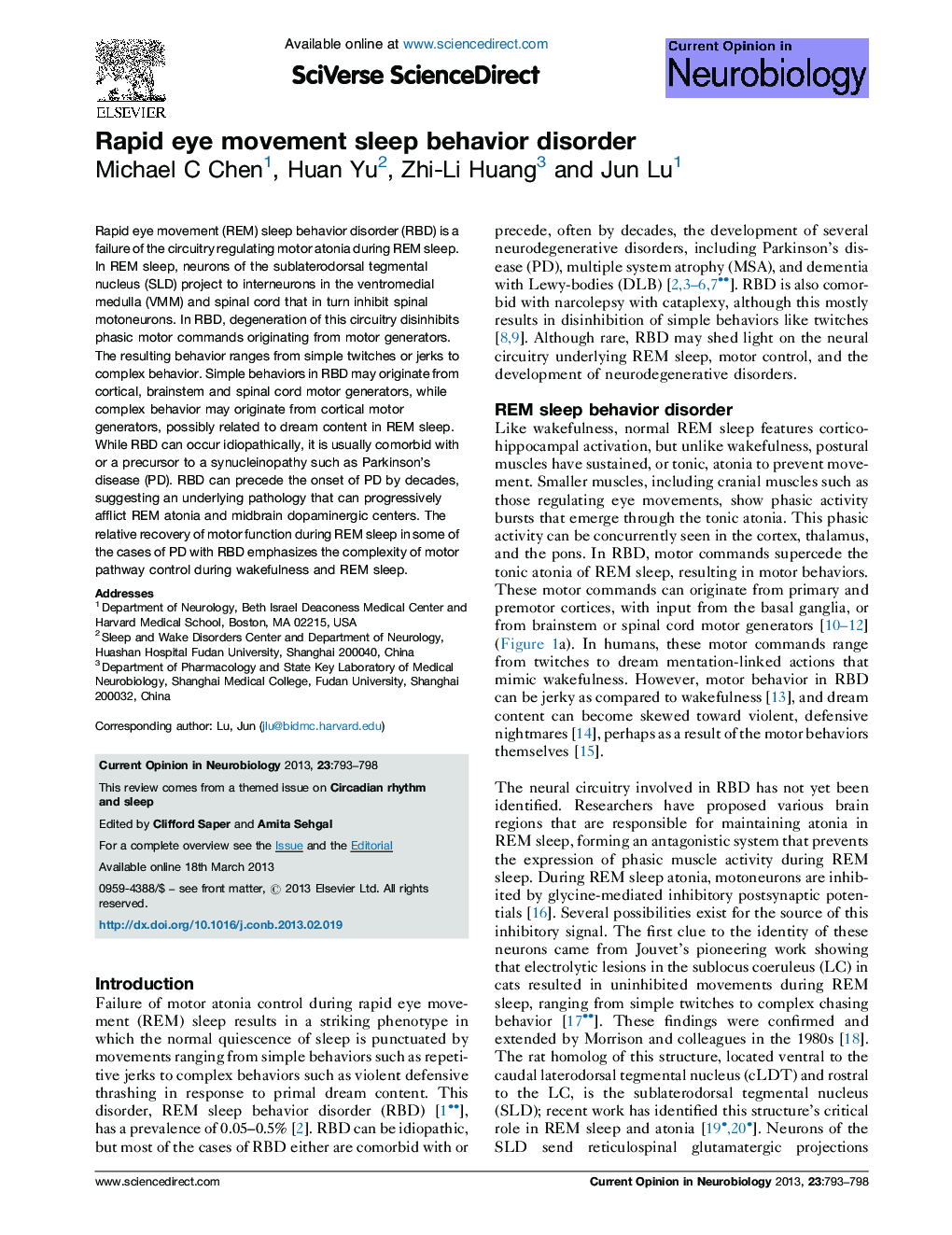| Article ID | Journal | Published Year | Pages | File Type |
|---|---|---|---|---|
| 6266605 | Current Opinion in Neurobiology | 2013 | 6 Pages |
â¢During rapid eye movement (REM) sleep, phasic motor activity is inhibited by a REM atonia circuit.â¢In REM sleep behavior disorder (RBD), inhibition is lost due to lesion of this REM atonia circuit.â¢In RBD, multiple putative motor generators drive simple or complex motor behaviors in REM sleep.â¢RBD can occur with or before a neurodegenerative disorder like Parkinson's disease.â¢In Parkinson's disease with RBD, movements may improve in REM sleep.
Rapid eye movement (REM) sleep behavior disorder (RBD) is a failure of the circuitry regulating motor atonia during REM sleep. In REM sleep, neurons of the sublaterodorsal tegmental nucleus (SLD) project to interneurons in the ventromedial medulla (VMM) and spinal cord that in turn inhibit spinal motoneurons. In RBD, degeneration of this circuitry disinhibits phasic motor commands originating from motor generators. The resulting behavior ranges from simple twitches or jerks to complex behavior. Simple behaviors in RBD may originate from cortical, brainstem and spinal cord motor generators, while complex behavior may originate from cortical motor generators, possibly related to dream content in REM sleep. While RBD can occur idiopathically, it is usually comorbid with or a precursor to a synucleinopathy such as Parkinson's disease (PD). RBD can precede the onset of PD by decades, suggesting an underlying pathology that can progressively afflict REM atonia and midbrain dopaminergic centers. The relative recovery of motor function during REM sleep in some of the cases of PD with RBD emphasizes the complexity of motor pathway control during wakefulness and REM sleep.
